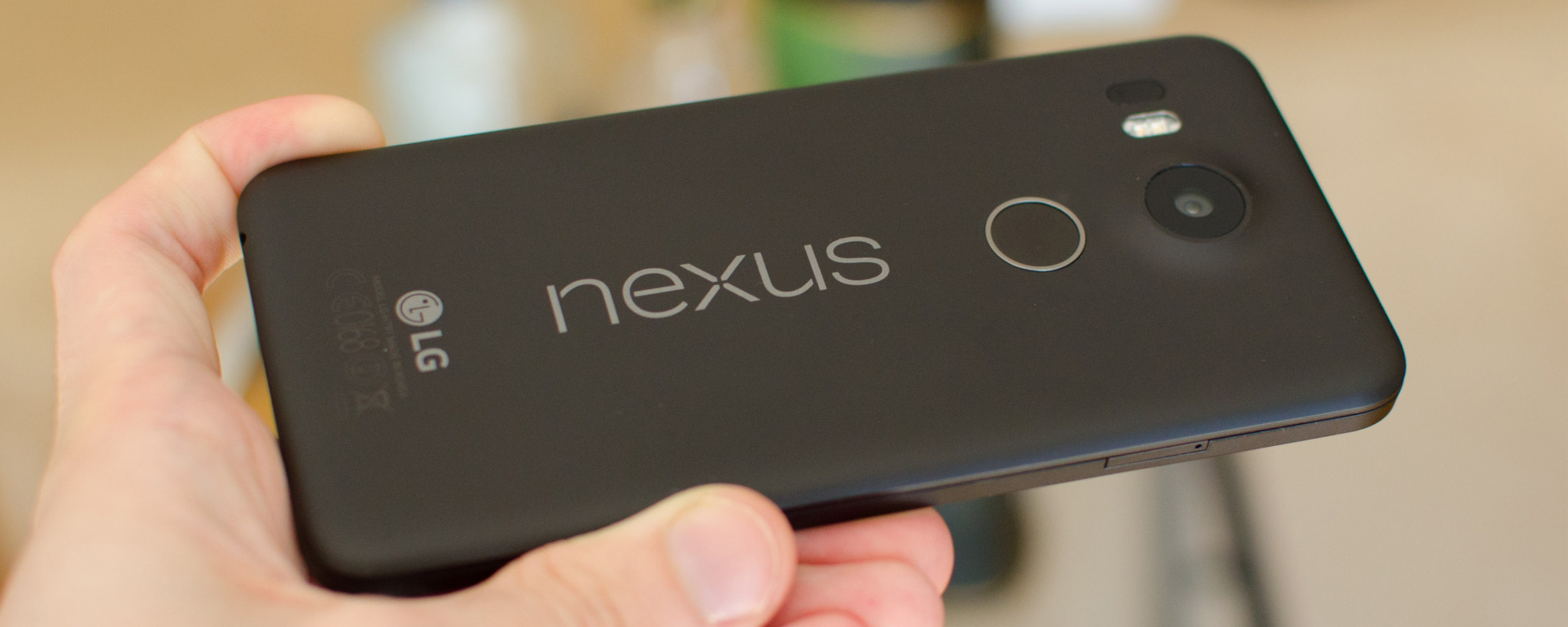Camera
Finally we're getting a Nexus device with a decent camera. The Nexus 5X comes with a 12.3-megapixel Sony Exmor IMX377 CMOS sensor, which is 1/2.3" in size and comes with 1.55 µm pixels. It's paired with an f/2.0 lens, a dual LED flash, and infrared laser-assisted autofocus. The camera captures images at a 4:3 aspect ratio with a resolution of 4000 x 2992 natively.
On the front is a five-megapixel sensor with an f/2.0 lens and 1.4 µm pixels. The front camera is only capable of 1080p video capture, while the rear can record 4K, although neither camera comes with optical image stabilization.
While the Nexus 5X doesn't come with OIS, the combination of a wide f/2.0 lens and large 1.55 micron pixels means that general performance across the board is excellent. Whether you're shooting in bright sunlight or indoors and under artificial lighting, the Nexus 5X captures enough light to accurately expose and represent a scene. The result is images that look excellent in a range of conditions.
Like with most smartphone cameras, the Nexus 5X is strongest in good lighting. The amount of detail you get from a 12.3-megapixel image is good enough for viewing on today's displays, and there is a decent amount of room for cropping and manipulation. You don't get the same level of clarity as the 23-megapixel Sony Xperia Z5, but there's essentially no noise or sharpening-related artefacts when viewing photos from the Nexus 5X that are taken outdoors.
Color quality and accuracy of photos is outstanding, especially when taken with the superb HDR+ mode. Images are true to life and, where appropriate, vibrant, with good dynamic range, and excellent color balance thanks to solid metering.
The HDR+ mode, which is turned on or off automatically in the stock camera app, does take a long time to process images in the background after they're captured (although it doesn't restrict you from taking another photo almost immediately). The good news is that the wait is typically worth it, as the HDR+ mode not only improves dynamic range, but also improves low-light performance by applying surprisingly good, unaggressive noise reduction filters.
The Nexus 5X is very capable indoors and in low light, easily beating other non-stabilized cameras and often matching those with OIS. This isn't too surprising when you consider the large pixel size of the IMX377, which is very friendly to these conditions. Even with a shaky hand, I got sharp images in pretty poor lighting, which is a testament to how good this hardware is.
Unfortunately, the lack of OIS forces the Nexus 5X to use high ISOs when shooting at night, which introduces noticeable grain. The color quality of night time images is still very good, as is sharpness and brightness, but a similar shot taken with an OIS-laden smartphone doesn't produce as much grain. A lack of OIS also hurts video capture: the Nexus 5X shoots more shaky video than its competitors with OIS, and although 4K quality is good, OIS would make it better.
Is the Nexus 5X's camera as good as the market-leading Samsung Galaxy S6? Probably not, and that's both due to a lack of OIS (which does hurt the 5X somewhat in low light), and some processing differences that deliver somewhat undersaturated and underexposed shots from the 5X on cloudy days. However, the Nexus 5X is still a very good Android camera, and competes well with other top-notch shooters like the iPhone 6s, LG G4 and Xperia Z5.
While the Nexus 5X delivers great image quality, the stock Android camera app is underwhelming, even though it has improved in recent versions. A complete lack of a manual mode is disappointing when the camera hardware is so good, and there are essentially no camera modes outside the basics (auto, panorama, selfie, and video). Oddly, there's no burst mode, which has been a feature of most high-end cameras for a while now, though shutter lag and focus times were typically okay.
Luckily, the camera app interface is well designed, and there aren't many key features that are hidden away in menus (although that could be because there aren't many features). I appreciate how the camera defaults to capturing in 4:3, utilizing the full camera sensor, and reviewing recently-captured images is fast and straightforward.
The selfie camera is acceptable as far as 5-megapixel units go, and with HDR+ mode enabled, low-light performance is decent enough. The front camera is still several steps behind the rear camera, though I was pleased at how most of the selfies I took were well exposed and sharp enough to actually see what was going on.












